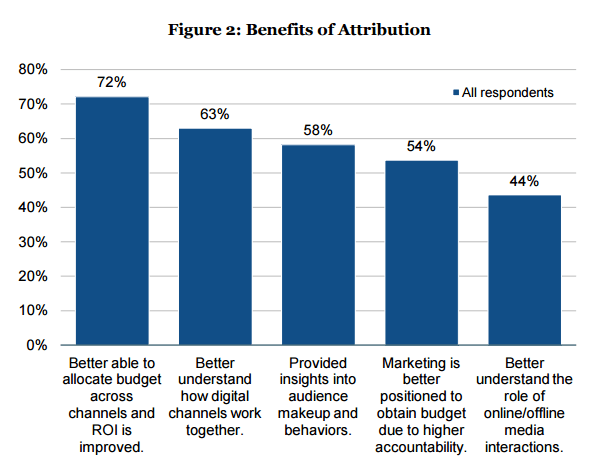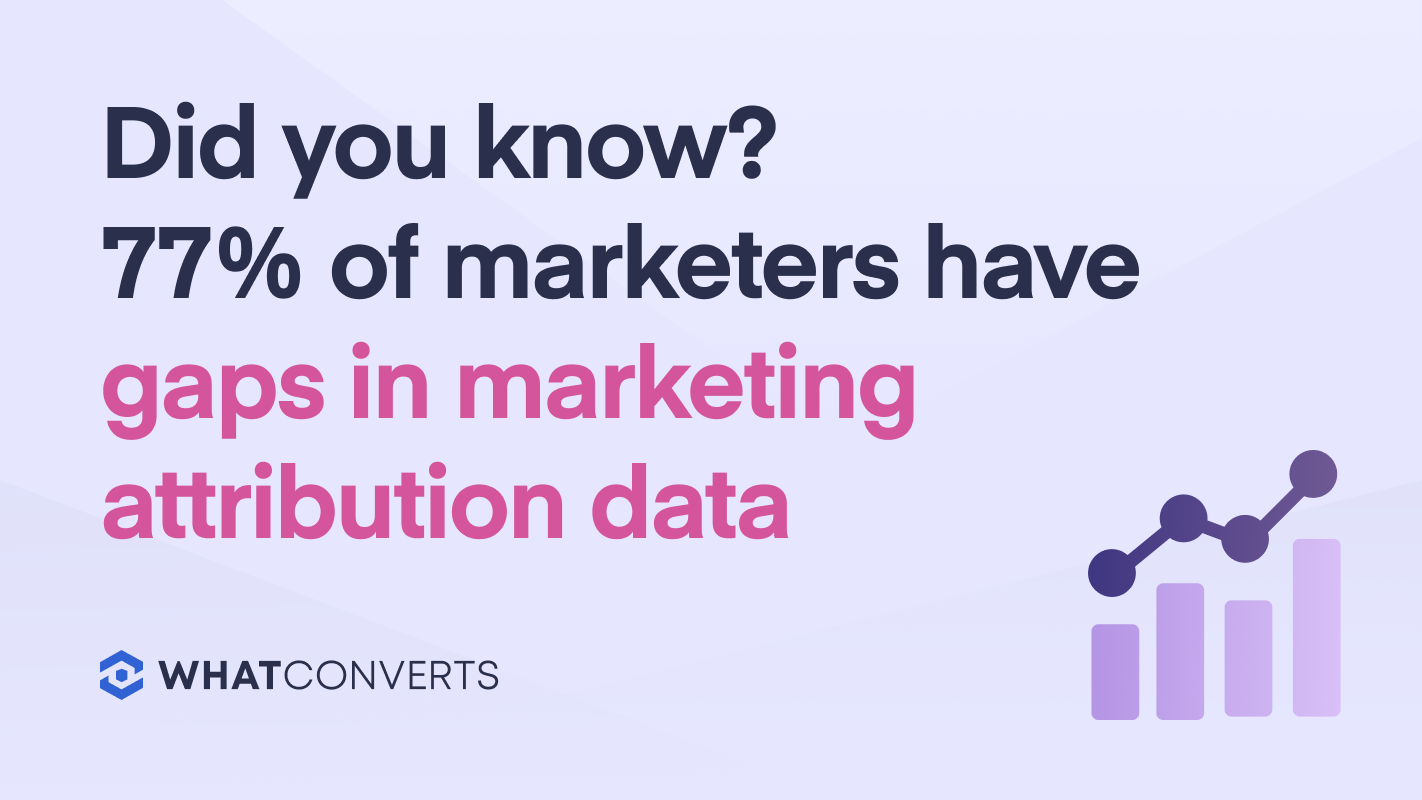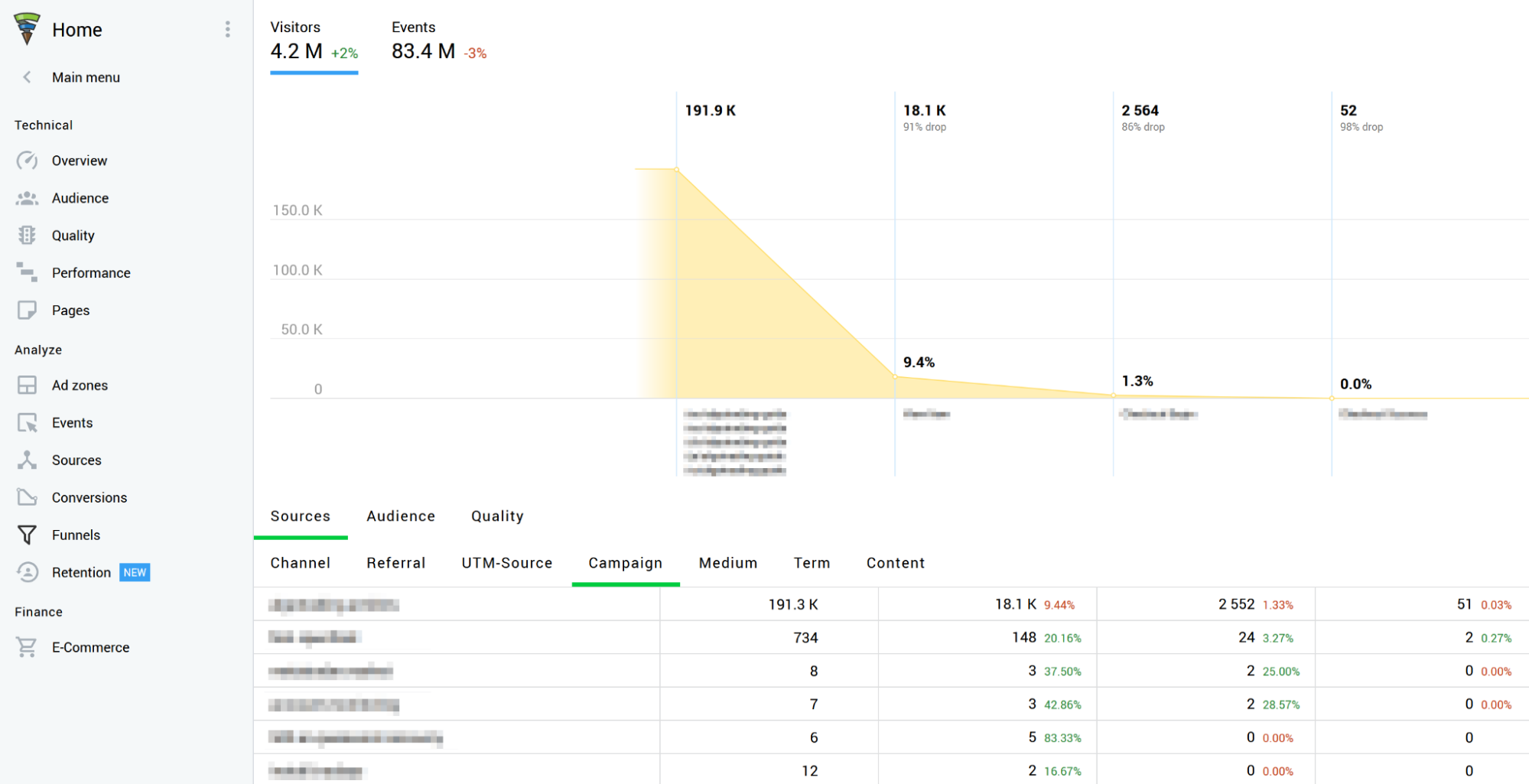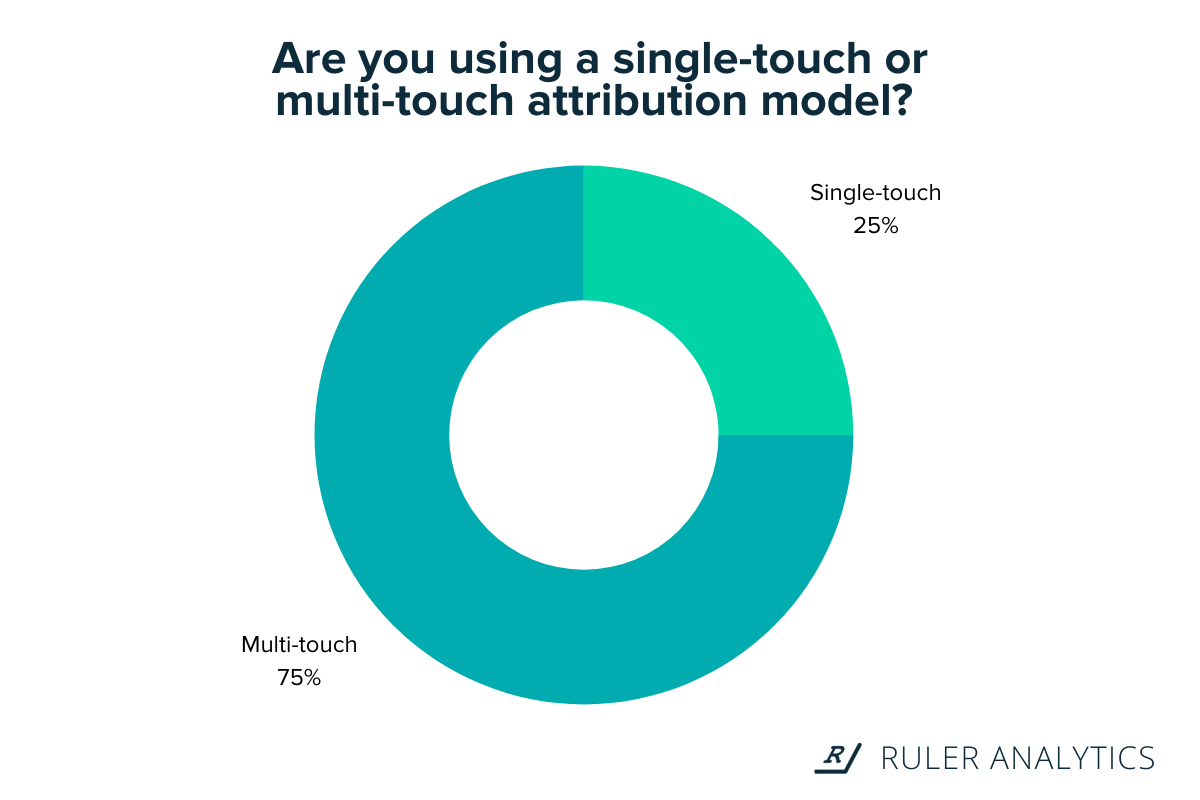What Is an Attribution Model?
Marketing attribution can help a business map out where to distribute credit for consumer conversion. The question is, just how much credit should each touchpoint receive? This is where attribution models come into play. Whether you opt for a first-click or last-click approach, or choose to review multiple groups of data, visualizing the high and low points of your consumer’s journey could help shape your future campaigning efforts and ensure your advertising efforts aren’t going to waste. In fact, according to a study by Econsultancy and Google Analytics, attribution modeling is responsible for improving budget allocation and can help business leaders understand what role each channel plays in their success. Image Source: Econsultancy and Google Analytics
As you can see here, over half of the respondents claimed that attribution models provided them with greater insights into audience behavior, while 44% of marketers gained a wider understanding of their online/offline media interactions.
Image Source: Econsultancy and Google Analytics
As you can see here, over half of the respondents claimed that attribution models provided them with greater insights into audience behavior, while 44% of marketers gained a wider understanding of their online/offline media interactions.
If done correctly, each channel should then have a clear cost-of-acquisition metric associated with it. I would argue that if a CMO today could not articulate the marketing ROI of her primary lead generations channels, there are issues with the way marketing investments are being made for the company. — Tim DaRosa, CMO of Zadara
How To Improve Your Attribution Models
With over 50% of all advertising budgets wasted on low-impact campaigns, it’s time to obtain a firmer grasp of your channel output. Let’s have a closer look at how you can introduce and improve your own attribution models for a higher ROI payoff.Introduce multiple attribution models
If you want a well-rounded understanding of your consumer’s journey from impression to checkout, it’s important to diversify your attribution models. A whopping 47% of CMOs rely only on the “Last Click” attribution model, which only gives credit to the final touchpoint that is engaged with directly before the conversion. While this model can help business leaders understand which marketing efforts may close a sale, it’s important to gather data on what touchpoint first piqued a lead’s interest too. Why not also introduce a “First Click” model into the mix too, which aims to give credit to a buyer’s first interaction with the brand? This could highlight a particular social channel or advertising campaign that has garnered engagement online. If you have a wider understanding of the initial touchpoints that boost brand awareness, it’ll be easier to replicate similar campaigns that could draw in more consumers. If you want to compare your first and last click touchpoints, it could also be time to introduce a linear attribution model that strives to provide you with an overview of your strategy as a whole. This model is particularly useful if you want to map each stage of the funnel in more detail.Take a data-driven approach
If you want to take your attribution modeling one step further, taking a data-driven approach can deliver precise results that rule-based methods lack. Image Source: What Converts
A staggering 77% of marketers claim that they have gaps in their attribution model data. Delving deeper into more complicated interactions, such as click-through rate, length of time spent on a page, and historical audience behavior, can aid a brand in understanding more pieces of a funnel’s jigsaw.
The key here is to delve deeper into your traffic sources, using analytic tools like Finteza that aim to track your site engagement at every stage of the funnel.
Automatically generating audience samples based on 15 key parameters, Finteza provides marketers with the ability to view real-time audience data in the form of easy-to-read visual reports. Segmenting traffic based on factors such as geolocation and visit sources makes it easier to create numerous attribution models that map different types of buyer journeys.
Better still, Finteza is also an expert at detecting potentially harmful botnet traffic. Detecting up to 12 types of low-quality traffic on each site page, it can effortlessly identify fake traffic sources that could affect the results of a data-driven attribution model.
No consumer is the same, and your advertising campaigns should reflect that. Using Finteza to help divide your traffic sources into targetable groups, you’ll quickly discover that conversion touchpoints differ depending on a number of traffic sources, factors and behaviors, meaning that your advertising approach should be customized depending on the specific audience group you’re targeting.
Finteza’s funnel tool can also spot potential weak spots in the sales system. While attribution is all about giving credit to conversion touchpoints, it’s also important to highlight areas that are receiving little engagement or site points that are susceptible to bounce.
Image Source: What Converts
A staggering 77% of marketers claim that they have gaps in their attribution model data. Delving deeper into more complicated interactions, such as click-through rate, length of time spent on a page, and historical audience behavior, can aid a brand in understanding more pieces of a funnel’s jigsaw.
The key here is to delve deeper into your traffic sources, using analytic tools like Finteza that aim to track your site engagement at every stage of the funnel.
Automatically generating audience samples based on 15 key parameters, Finteza provides marketers with the ability to view real-time audience data in the form of easy-to-read visual reports. Segmenting traffic based on factors such as geolocation and visit sources makes it easier to create numerous attribution models that map different types of buyer journeys.
Better still, Finteza is also an expert at detecting potentially harmful botnet traffic. Detecting up to 12 types of low-quality traffic on each site page, it can effortlessly identify fake traffic sources that could affect the results of a data-driven attribution model.
No consumer is the same, and your advertising campaigns should reflect that. Using Finteza to help divide your traffic sources into targetable groups, you’ll quickly discover that conversion touchpoints differ depending on a number of traffic sources, factors and behaviors, meaning that your advertising approach should be customized depending on the specific audience group you’re targeting.
Finteza’s funnel tool can also spot potential weak spots in the sales system. While attribution is all about giving credit to conversion touchpoints, it’s also important to highlight areas that are receiving little engagement or site points that are susceptible to bounce.
 With more data at your fingertips, you can take analytically driven attribution models one step further. Whether you trial new campaigns or try out new keywords, going beyond the reports is essential, especially when you have the tools to assess your progress along the way.
With more data at your fingertips, you can take analytically driven attribution models one step further. Whether you trial new campaigns or try out new keywords, going beyond the reports is essential, especially when you have the tools to assess your progress along the way.
Don’t forget about offline data
Last but not least, don’t forget about your offline data when constructing your attribution model. Offline attribution is an essential metric you’ll not want to forget if you also run a physical store or conduct a marketing campaign in a print or TV format. Online stats don’t take these touchpoints into account, which could skew your results if you’re not careful. There are two types of offline measurement techniques that every marketer should remember when constructing an attribution model:- Visit Attribution. This measurement analyses the performance of a physical touchpoint, such as a high-street store, by tapping into a mobile location or human movement stats.
- Spend Attribution. Like visit attribution, spend attribution also measures the success of a physical store, gathering data on in-store spending.
A Multi-touch Future
As we step into a competitive future of ecommerce, optimizing a consumer’s journey across multiple different touchpoints has become a necessity for 71% of top marketers. With over three quarters of marketers now investing in a multi-touch approach to attribution tracking, it has become easier than ever before to map consumer data at all stages of the funnel. Image Source: Ruler Analytics
As competition heats up and new channels are added to the ecommerce funnel, one thing is for sure: a data-driven approach to attribution modeling is crucial for brands that want to stay ahead of the curve.
Image Source: Ruler Analytics
As competition heats up and new channels are added to the ecommerce funnel, one thing is for sure: a data-driven approach to attribution modeling is crucial for brands that want to stay ahead of the curve.
Frequently Asked Questions on Improved Attribution Models
What are the key differences between the various types of attribution models?
Attribution models differ in how they assign credit to different touchpoints in a customer’s journey. For instance, the Last Click model assigns all credit to the final touchpoint before a conversion, while the First Click model gives all credit to the first interaction. Linear models distribute credit equally across all touchpoints, while Time Decay models assign more credit to interactions closer to the conversion. Position-based models split credit between the first and last interaction, with the remaining credit distributed among other touchpoints. Understanding these differences can help marketers choose the most suitable model for their campaign.
How can improved attribution models benefit my digital marketing strategy?
Improved attribution models provide a more accurate understanding of your marketing efforts. They allow you to identify which channels and touchpoints are most effective in driving conversions, helping you optimize your marketing strategy. By understanding the customer journey better, you can allocate your budget more efficiently, improve ROI, and deliver a more personalized customer experience.
What are some challenges in implementing attribution models?
Implementing attribution models can be complex due to factors like data silos, cross-device tracking, and the evolving customer journey. Marketers may struggle to integrate data from different sources and track customer interactions across multiple devices. Additionally, the customer journey is not linear and can involve multiple touchpoints across various channels, making it difficult to accurately assign credit.
How can I overcome the challenges of implementing attribution models?
Overcoming these challenges requires a comprehensive approach. You can start by integrating your data sources to break down silos and gain a unified view of your customer interactions. Using advanced tracking tools can help you track customer behavior across devices. Additionally, adopting a multi-touch attribution model can provide a more accurate representation of the customer journey, as it considers multiple touchpoints.
How do I choose the right attribution model for my business?
Choosing the right attribution model depends on your business goals, customer journey, and the channels you use. If your goal is to acquire new customers, a First Click model may be suitable. If you want to understand the overall customer journey, a Linear or Time Decay model may be more appropriate. It’s important to test different models and analyze their results to determine the most effective one for your business.
How does attribution modeling impact ROI?
Attribution modeling can significantly impact ROI by providing insights into which marketing efforts are driving conversions. This allows you to allocate your budget more effectively, focusing on high-performing channels and touchpoints. By optimizing your marketing strategy based on these insights, you can improve your ROI.
Can attribution models help in personalizing customer experiences?
Yes, attribution models can play a crucial role in personalizing customer experiences. By understanding the customer journey and the touchpoints that lead to conversions, you can deliver more targeted and personalized messages. This can enhance customer engagement and loyalty, leading to higher conversion rates.
How do attribution models relate to multi-channel marketing?
Attribution models are essential in multi-channel marketing as they help identify which channels are contributing to conversions. This allows you to optimize your multi-channel strategy, focusing on the channels that deliver the best results. Without attribution models, it would be challenging to measure the effectiveness of your multi-channel efforts.
How often should I review and update my attribution model?
It’s recommended to review and update your attribution model regularly to ensure it remains relevant and effective. This could be quarterly, semi-annually, or annually, depending on your business and marketing strategy. Regular reviews allow you to adapt to changes in customer behavior, market trends, and business goals.
What is the future of attribution modeling in digital marketing?
The future of attribution modeling lies in more advanced and accurate models that can handle the complexities of the modern customer journey. This includes models that can track cross-device interactions, integrate offline and online data, and consider the impact of non-digital touchpoints. Machine learning and AI are also expected to play a significant role in developing more sophisticated attribution models.
 Dmytro Spilka
Dmytro SpilkaDmytro is a Head Wizard at Solvid, an Inbound Marketing and Software Development Agency in London, UK. An author for a wide range of publications, he is also currently developing an advanced, user-friendly Q&A platform for web developers, inbound marketers and software engineers.





